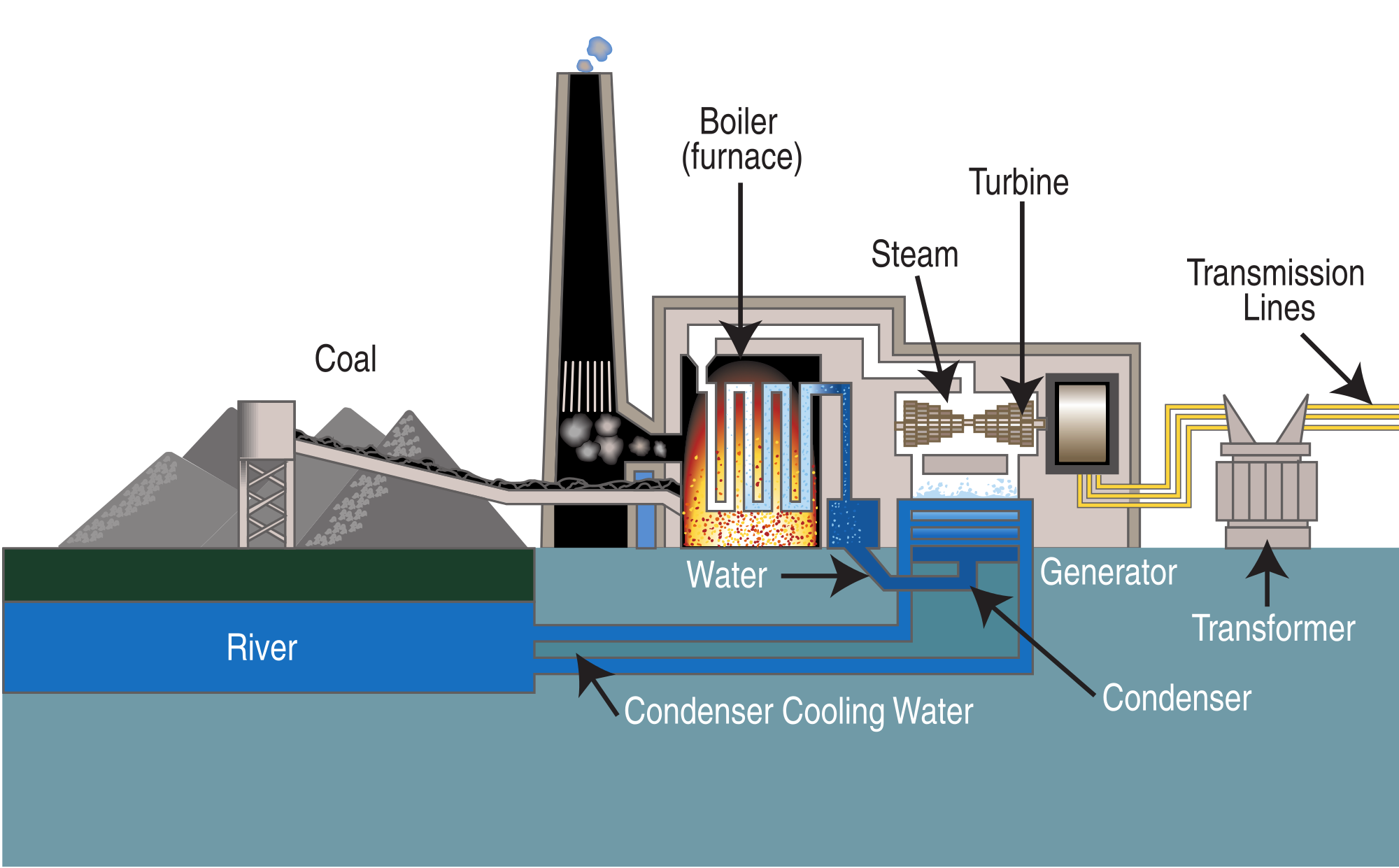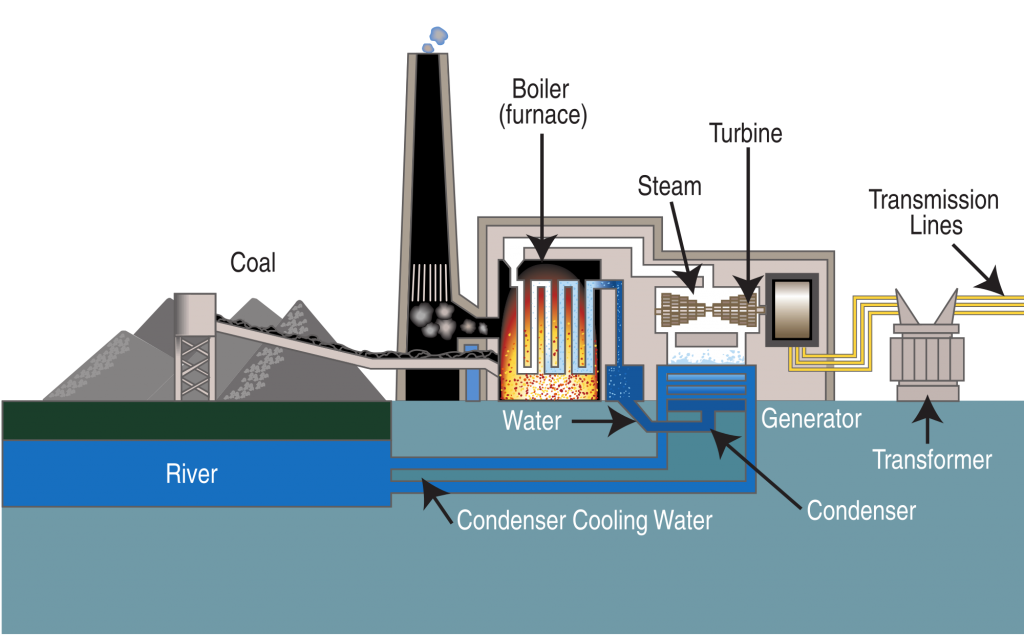November 25, 2014 – A technology developed at Massachusetts Institute of Technology (MIT) may help fight global climate change by making steam power plants more efficient through the invention of a new coating material. Whether coal-fired, gas-powered, geothermal, nuclear, biomass or solar thermal, all these energy sources get used in power plants to produce steam. In fact 85% of the world’s power plants (a schematic image of a coal-fired one appears below) operate steam-driven turbines. Every steam turbine has a steam condenser on the back end and when the steam emerges after passing through the turbine the condenser cools it. The cooling process does just what the name of the compartment says, it condenses the steam to water. That creates suction which then draws more steam through the turbine increasing its efficiency. For power plants, getting more power output per unit of energy input is critical and improvements to the condenser can mean fuel savings and, therefore, fewer carbon emissions.
The trick is in the coatings that line the steam condenser. In the high temperature environment getting a coating that is durable and thin can make an incredible difference. And that is what a team of MIT researchers have accomplished. The water repellant polymer coating developed has been tested in the lab and a new company, DropWise, intends to test it in power plants where it is expected to boost the heat rate performance of the condensers.
Heat rate is the standard by which steam turbines are measured. It is defined as the amount of heat applied to water to produce a specified unit of power. In the United States it is measured in British Thermal Units (BTUs) per kilowatt hour of electricity. Elsewhere the measure is in Kilocalories (Kcals) per kilowatt hour. Divide the heat applied measure in BTUs or Kcals to generate a kilowatt hour by the heat rate and you get the efficiency measure as a percentage. The U.S. Energy Information Administration, on its web page provides two examples:
A heat rate of 10,140 BTUs divided by the heat applied to generate a kilowatt hour (3,412 BTUs) produces an efficiency of 34%.
A heat rate of 7,500 BTUs divided by the same amount as above produces an efficiency of 45%.
Every fossil fuel and nuclear power plant in the United States has a published heat rate. Improving the efficiency of these plants alone, states DropWise, “could offset more carbon than the entire global solar installations from 2013.” At the same time, the coatings developed by the company can help power plants conserve water by using far less to generate a unit of energy.
Watch the video to learn more.












[…] Today's net carbon emitters could cut fossil fuel energy requirements in half and reduce emissions by half as well if material adopted. […]